Pretty winter sky in Upstate Manhattan:
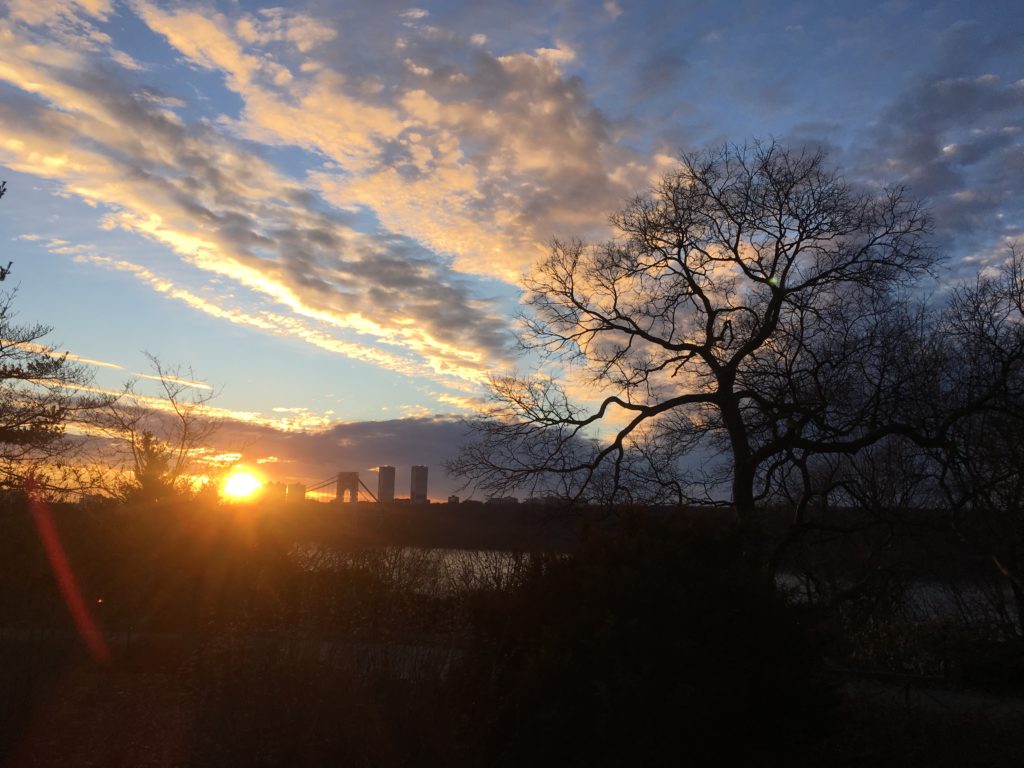
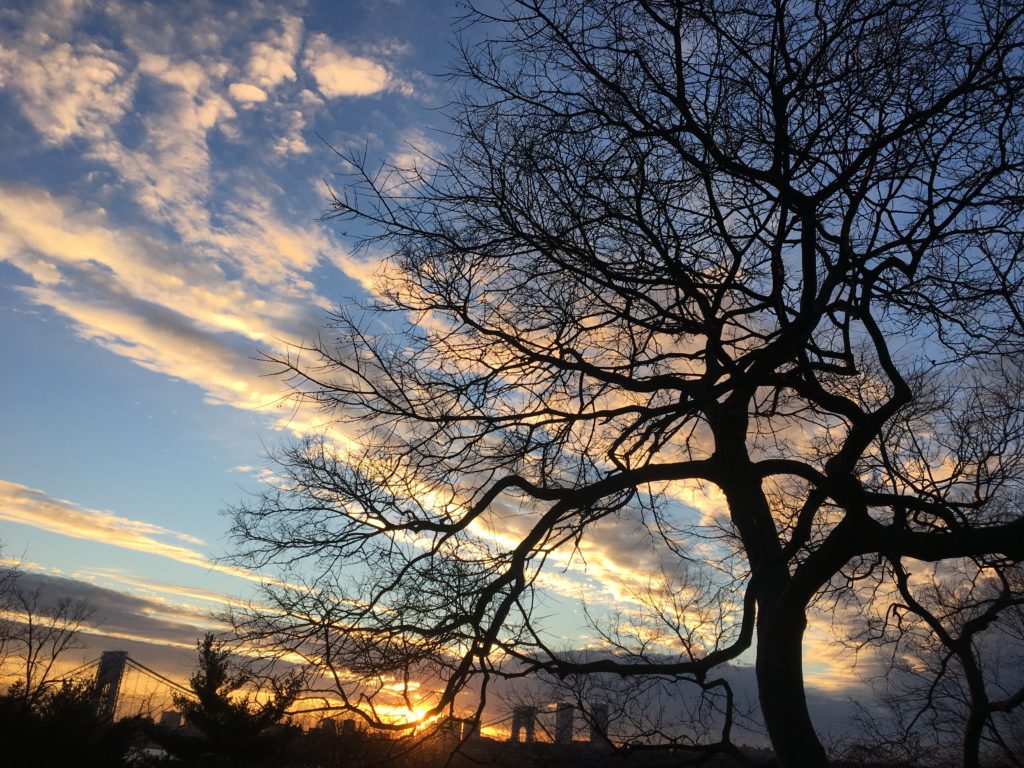
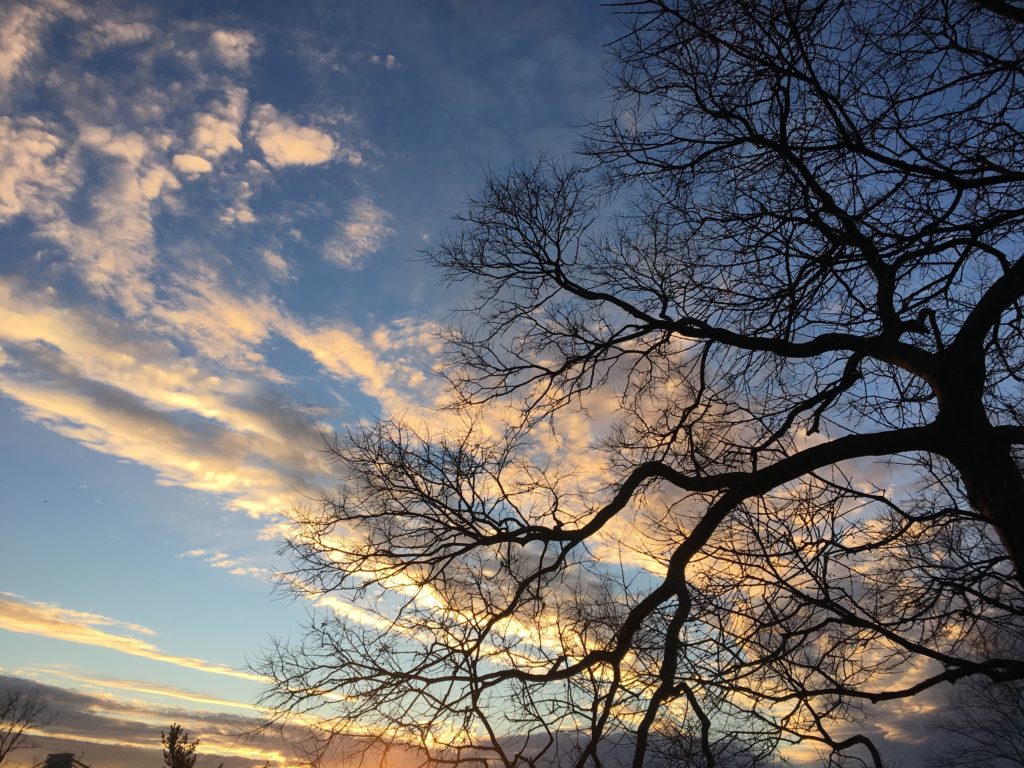
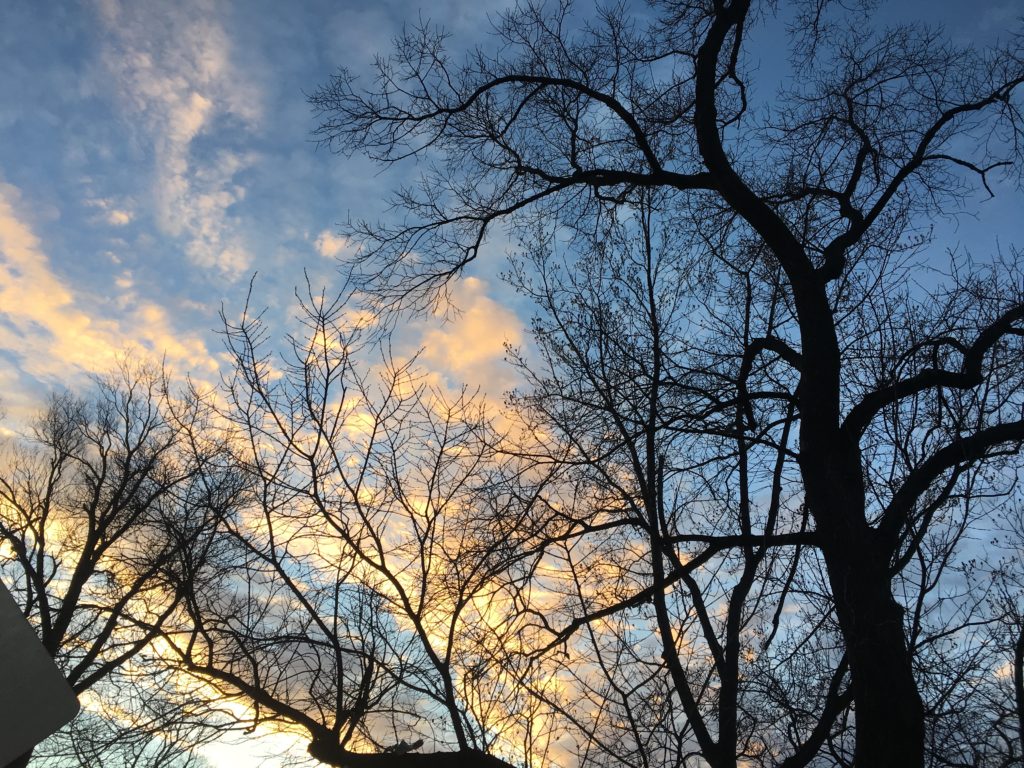
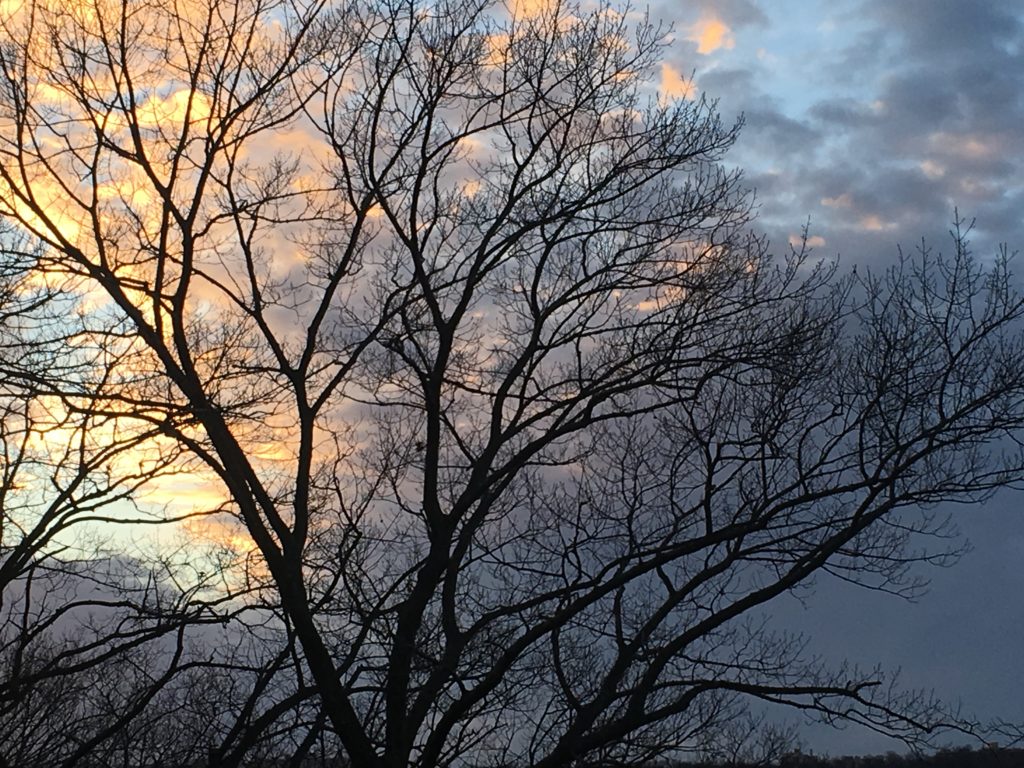
Pretty winter sky in Upstate Manhattan:





I love a drawing. Looking at a drawing is like a little invitation to the mind of a painter, even a long dead one. The years fall away, and I am with whomever it is, and we are sitting together, struggling with the same light and the same colors, and the same world to try to translate into a picture. So I can wholeheartedly recommend the show of Delacroix drawings at the Met, on view there til January. But I can’t tell you that I adored the painting show. There are some lovely passages of paint, and some gorgeous, dramatic lightscapes. But the drama of it all kind of wore me out. However, there are drawings in the show that are beautiful, and some prints (illustrating a Faust text). But the best thing is this accompanying show of drawings and sketchbooks. That’s where I found most of these treasures (though I think the tigers are from the painting show):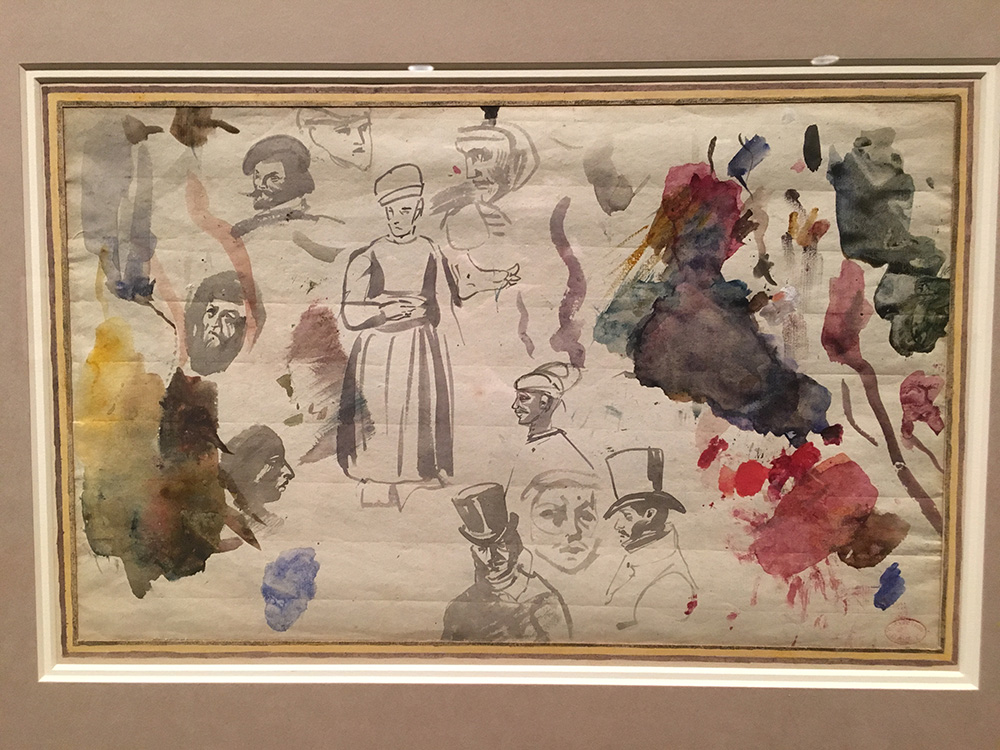
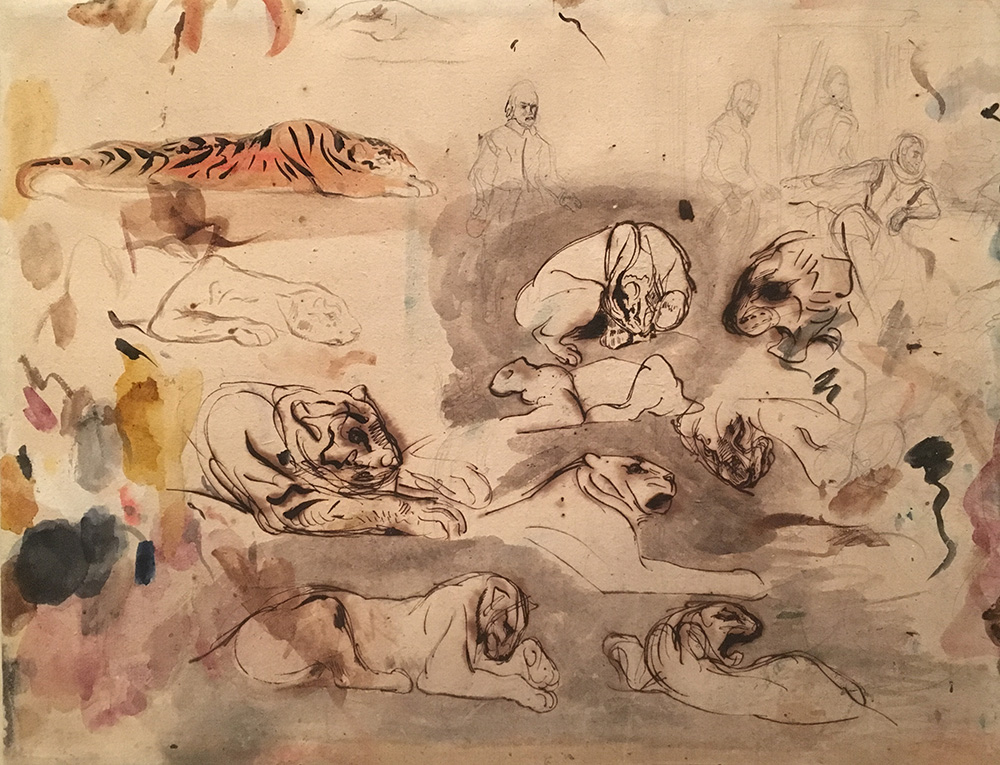
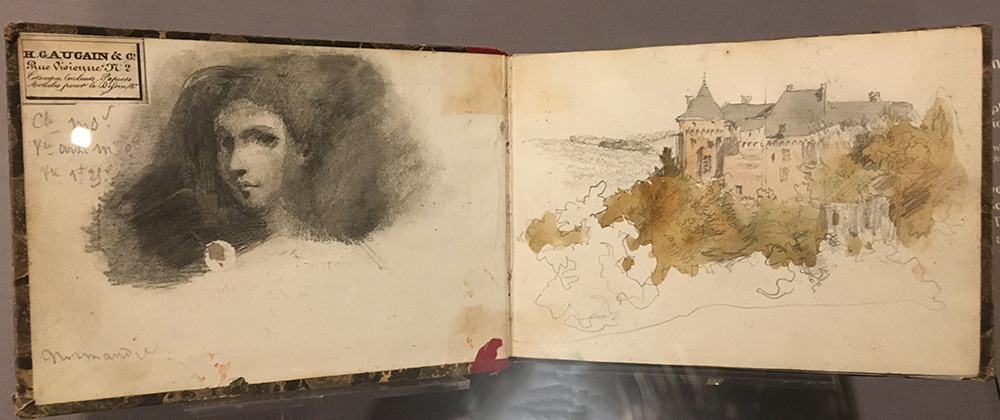
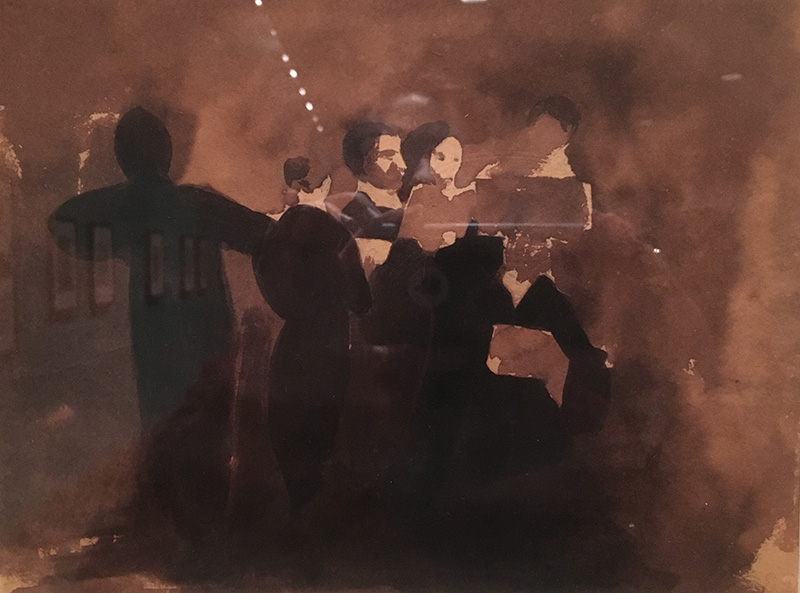
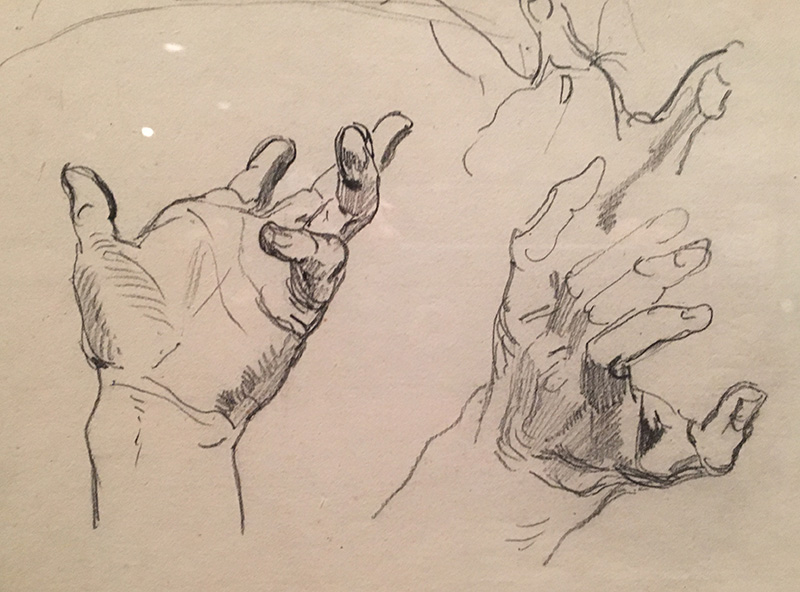
 Monday I went to the Guggenheim to see the Hilma af Klint exhibition on view there til April. af Klint was a painter and spiritualist who was painting in the early 1900s, making these fantastic, resonant, vibrating abstractions long before Kandinsky and Malevich. That she was a woman is thrilling to me. And to call them abstract isn’t quite right–they are not representational, but each painting, especially the mandala paintings and Group IV, The Ten Largest, have a weighty presence, almost like entities.
Monday I went to the Guggenheim to see the Hilma af Klint exhibition on view there til April. af Klint was a painter and spiritualist who was painting in the early 1900s, making these fantastic, resonant, vibrating abstractions long before Kandinsky and Malevich. That she was a woman is thrilling to me. And to call them abstract isn’t quite right–they are not representational, but each painting, especially the mandala paintings and Group IV, The Ten Largest, have a weighty presence, almost like entities.
There’s an excellent review of the exhibit in the Times, Roberta Smith says about The Ten Largest:
“These game-changing works envelop you in hues from dusty orange to pale pinks and lavenders, tumbling compositions of circles, spirals and pinwheels, and unfurling ribbonlike lines that sometimes form mysterious letters and words. The scale of the motifs and the paintings’ sheer size (10 feet by nearly 9 feet) invite you to step in and float away to the music of the spheres. That they are rendered in tempera on paper, lighter than oil on canvas but still quite painterly, contributes to their levitating power. In their wit, ebullience, multiple references and palette, “The Ten Largest” seem utterly contemporary, made-yesterday fresh. But prepare for label shock: they were created in 1907.”
I have included some pictures of those paintings in my last blog post Hilma af Klint at the Guggenheim, Part 1. But here I wanted to include some of the mandala paintings.
The last one, with the rainbow border, was the subject of a meditation at the Guggenheim. There was a spiritualist leading the encounter with the painting. Participants sat in front of the painting with their hands up to feel the energy coming off of the painting. The leader of the mediation encouraged participants to see beyond the painting with their senses, to feel into the painting, to go beyond the painting. It was interesting, though I didn’t feel anything beyond what I could see, disappointingly. But one thing she said I thought was interesting: “Think of why you have encountered this painting on this day? What is it trying to say to you?”
The paintings are satisfyingly large, beautifully painted, elegant. This first one, with the reddish background–that red is the best thing–kind of reds and terra cottas vibrating there together
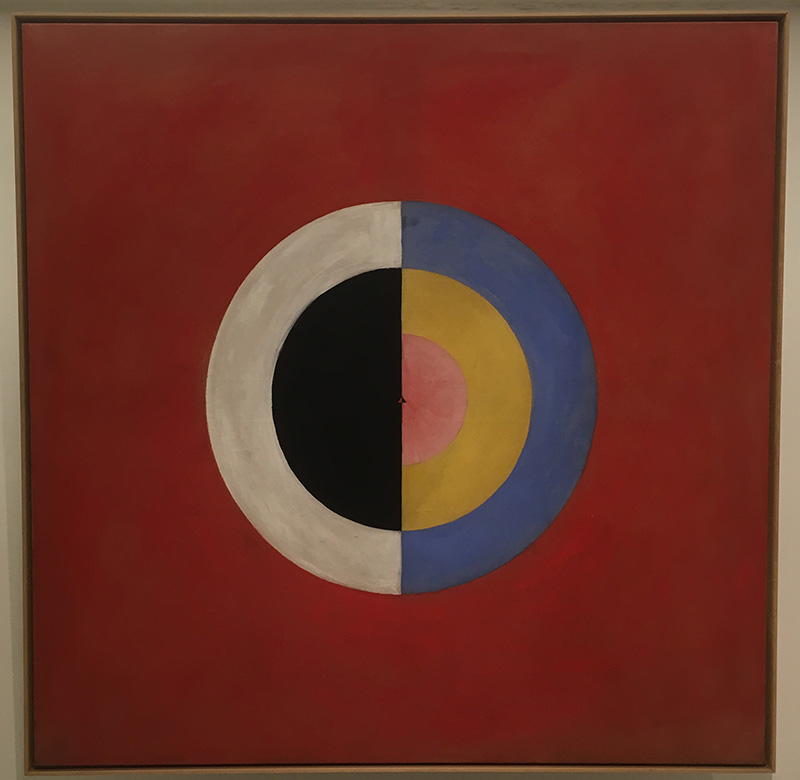
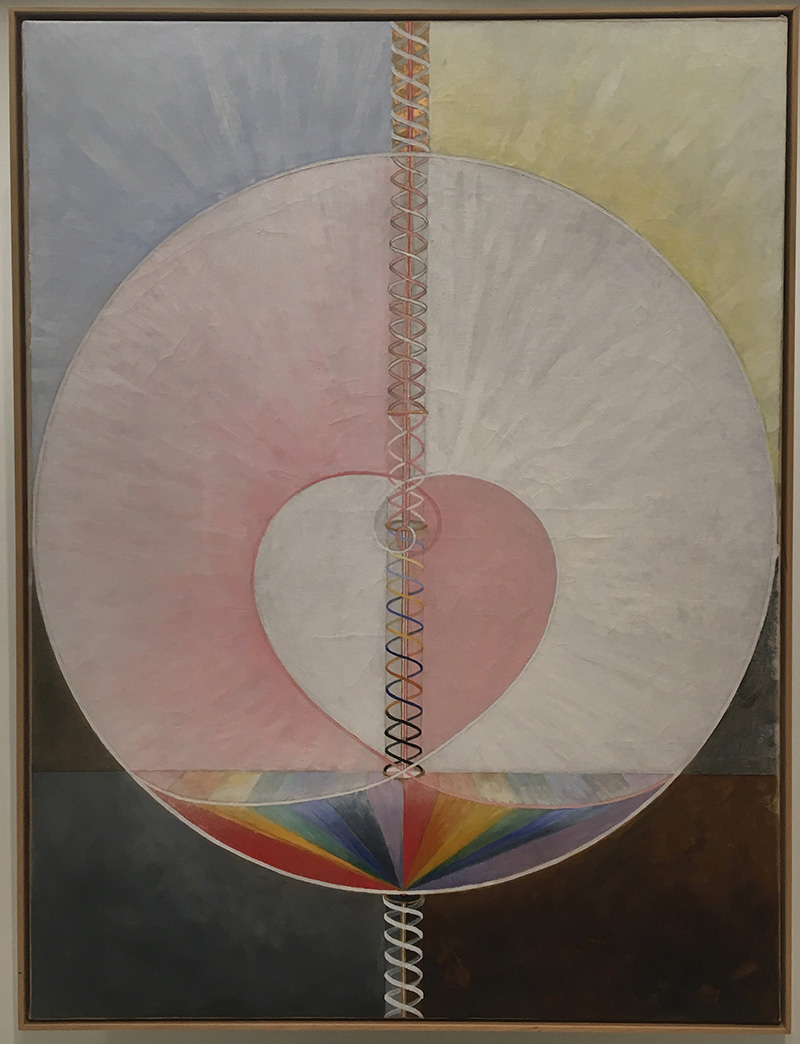

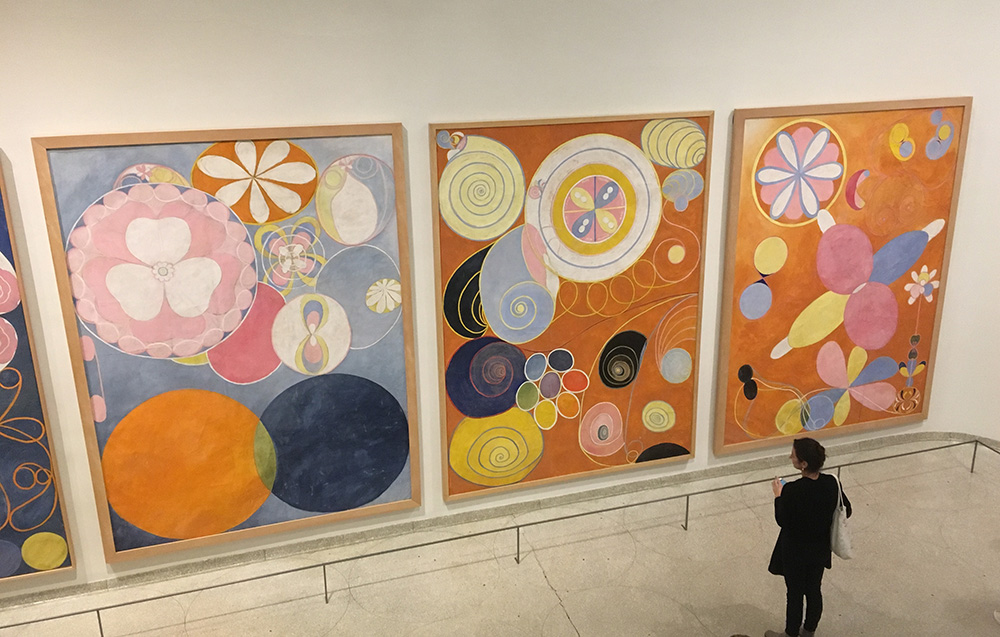
From The Ten Largest: tempera on paper, mounted on canvas
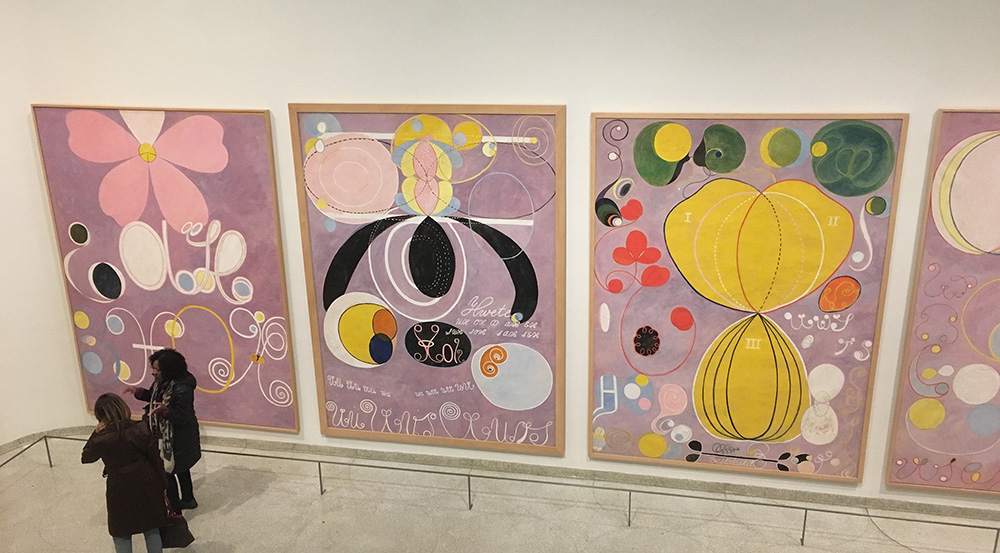
From The Ten Largest: tempera on paper, mounted on canvas
Today I saw a fantastic show of paintings by the Swedish artist Hilma af Klint, who was painting these incredible abstracts in the early 1900s, years before Malevich, Mondrian, Kandinsky were eschewing anything representational. She studied at the Royal Academy in Sweden, studying representational art and painting traditional things.

Fauna studies from the Royal Academy days
She started getting involved in spiritualist pursuits and studies, and joined a group of four other women who were attempting to make contact with the world beyond the grave, with the world of spirits. She received a message from these contacts with spirits that told her (I am rushing the story a bit) to prepare some paintings for a temple. She painted many studies and large works, but insisted that her work not be shown until twenty years after her death, as she felt that it wouldn’t be understood.
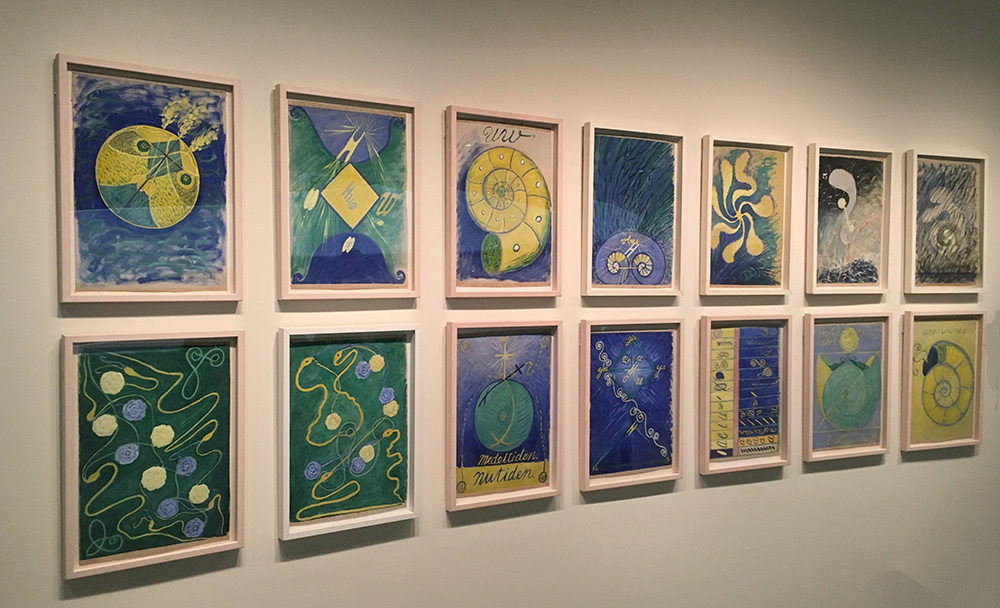
Primordial Chaos, Group 1
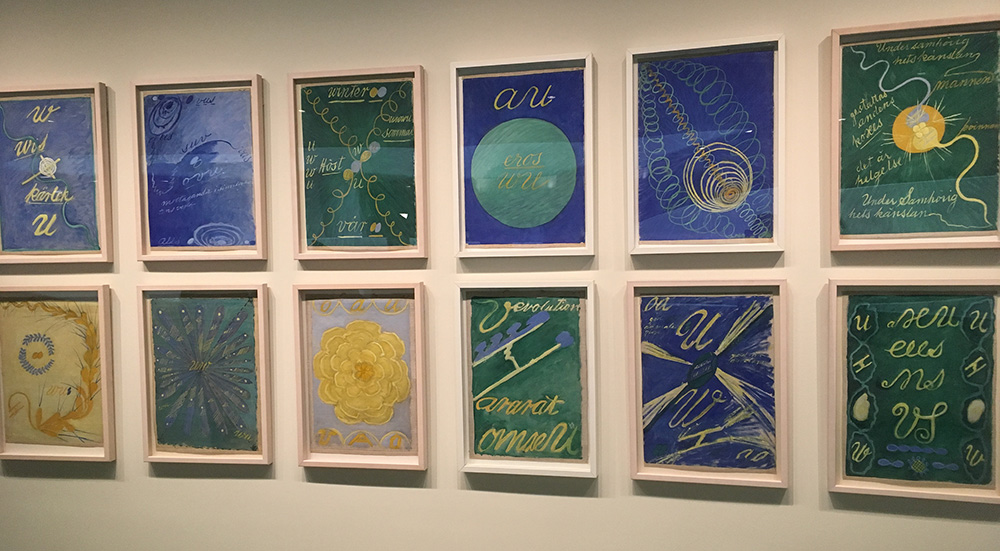
Primordial Chaos, Group 2
The paintings are astounding: joyful, searching, elegantly executed, with rigor, and also filled with gravity–a dense, vibrating intensity in the room.
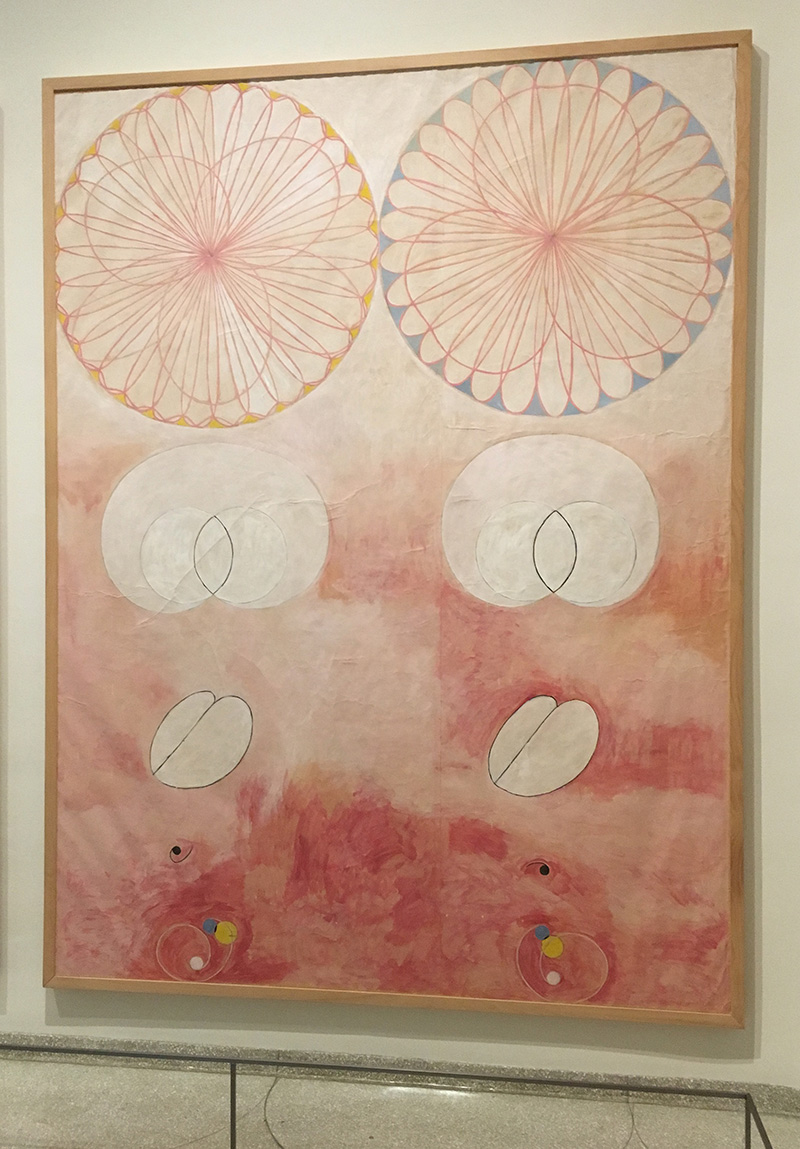
Also from The Ten Largest, tempera on paper, mounted on canvas
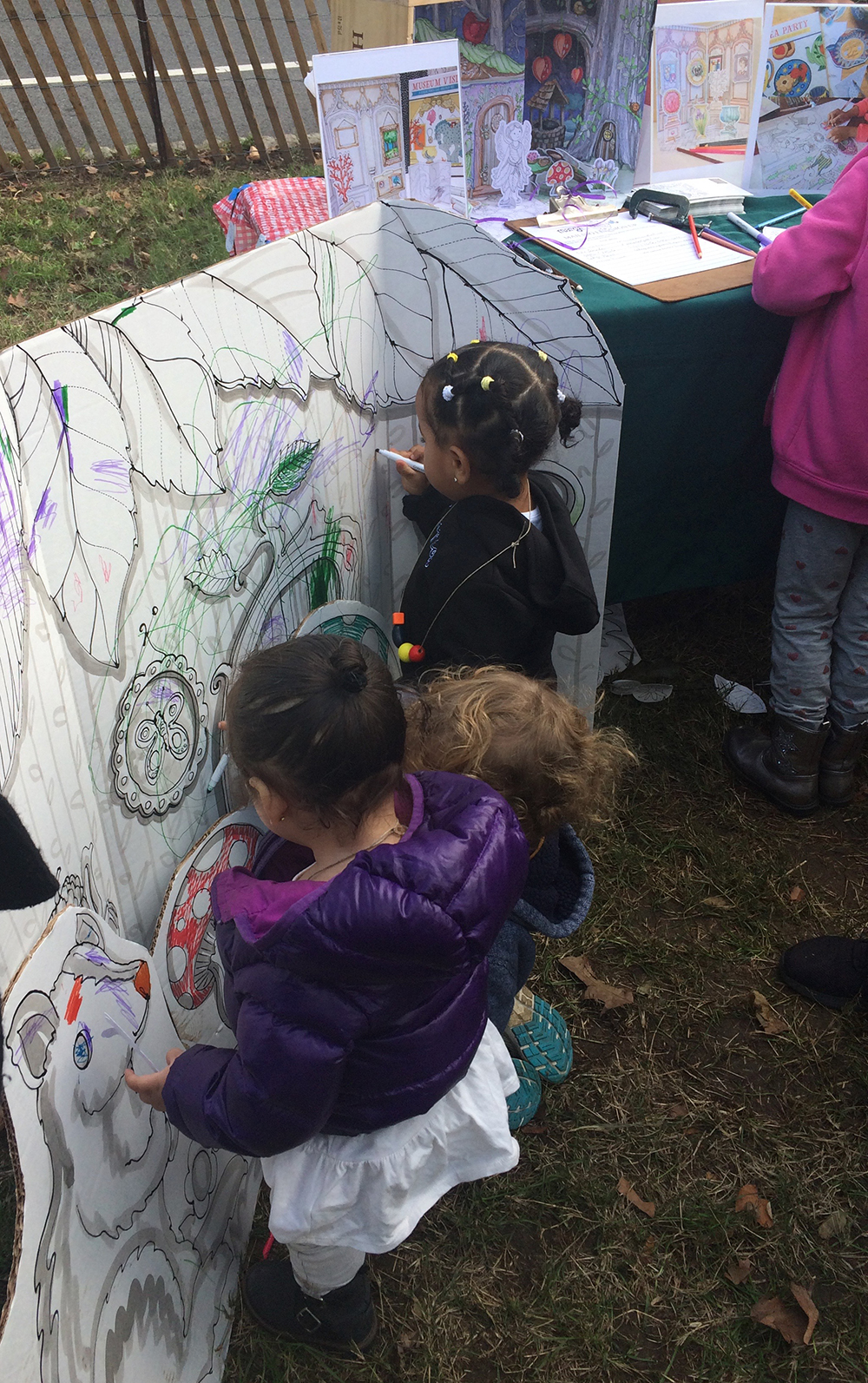
The tiniest colorers were drawn to coloring the largest things to color: here they are coloring a fairy house, mushrooms and a squirrel.
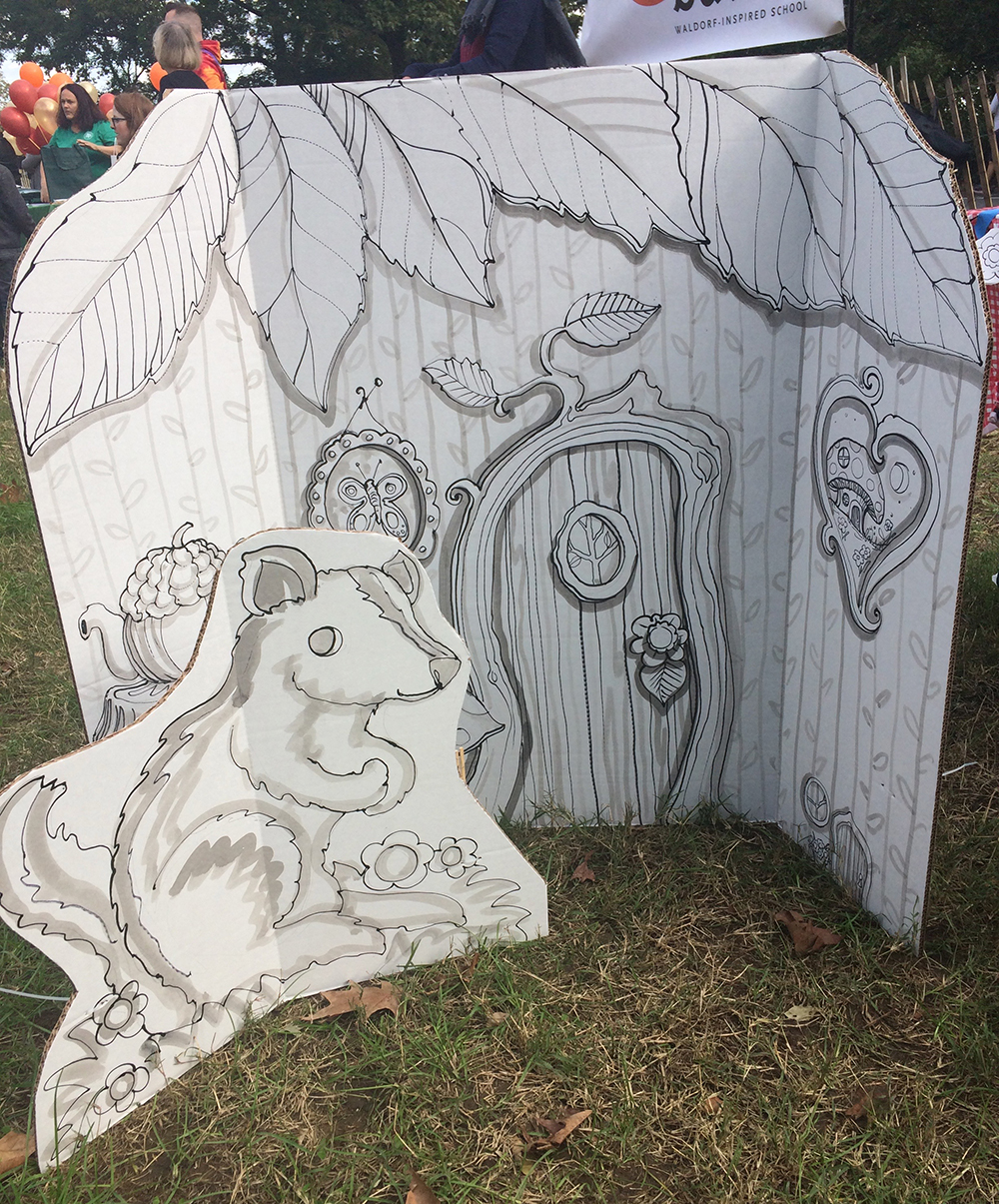
The fairy house and the squirrel before the little ones began their earnest decorating.
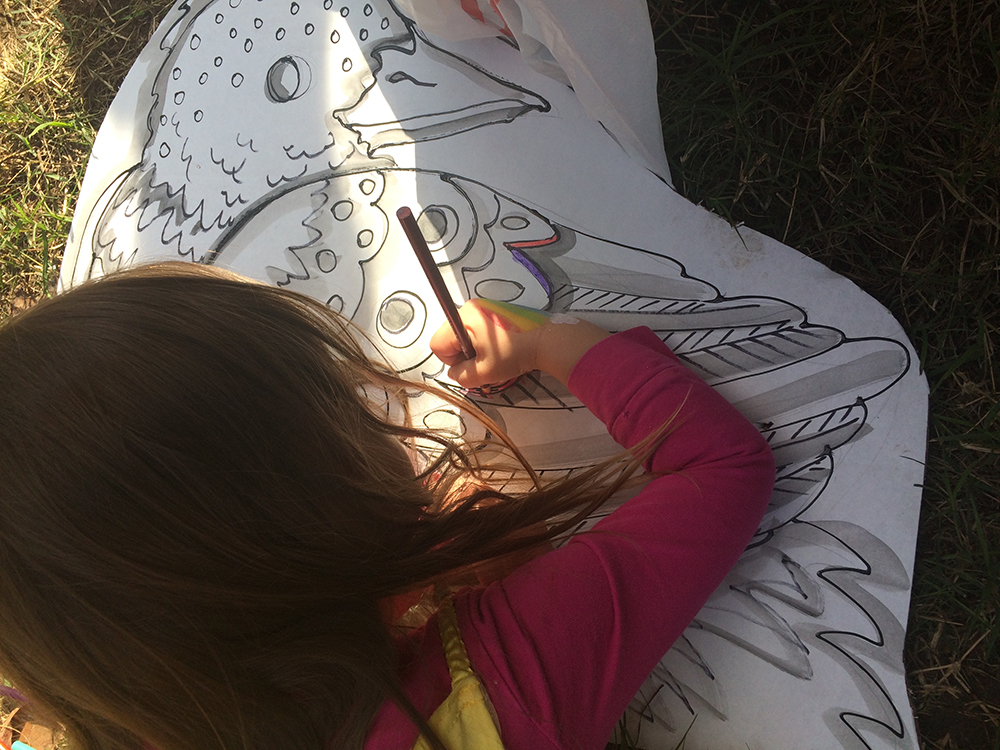
One little girl was super interested in coloring this bird, flopped right down on her stomach to do so, and wouldn’t be budged until I suggested to her father that they should come back and get it to take home after they looked at all the other Harvest Festival things–cupcake decorating and eating, pumpkin painting, games, music, dancing and more.
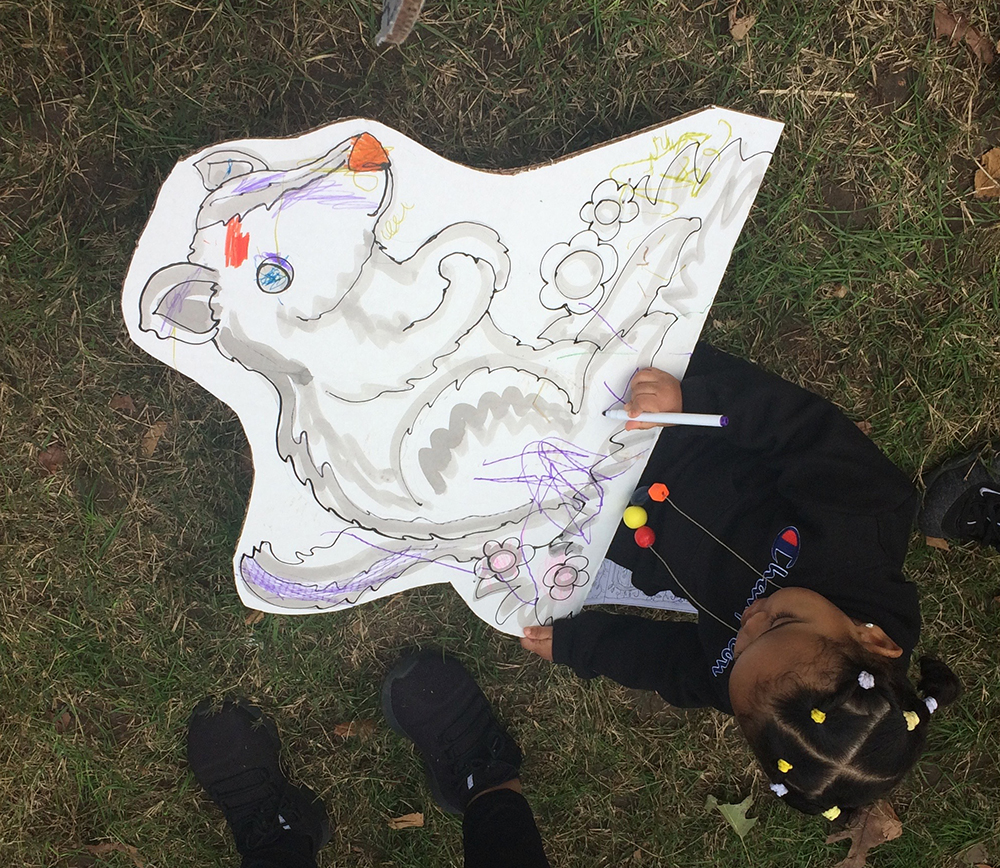
This neat, small person working on the squirrel.
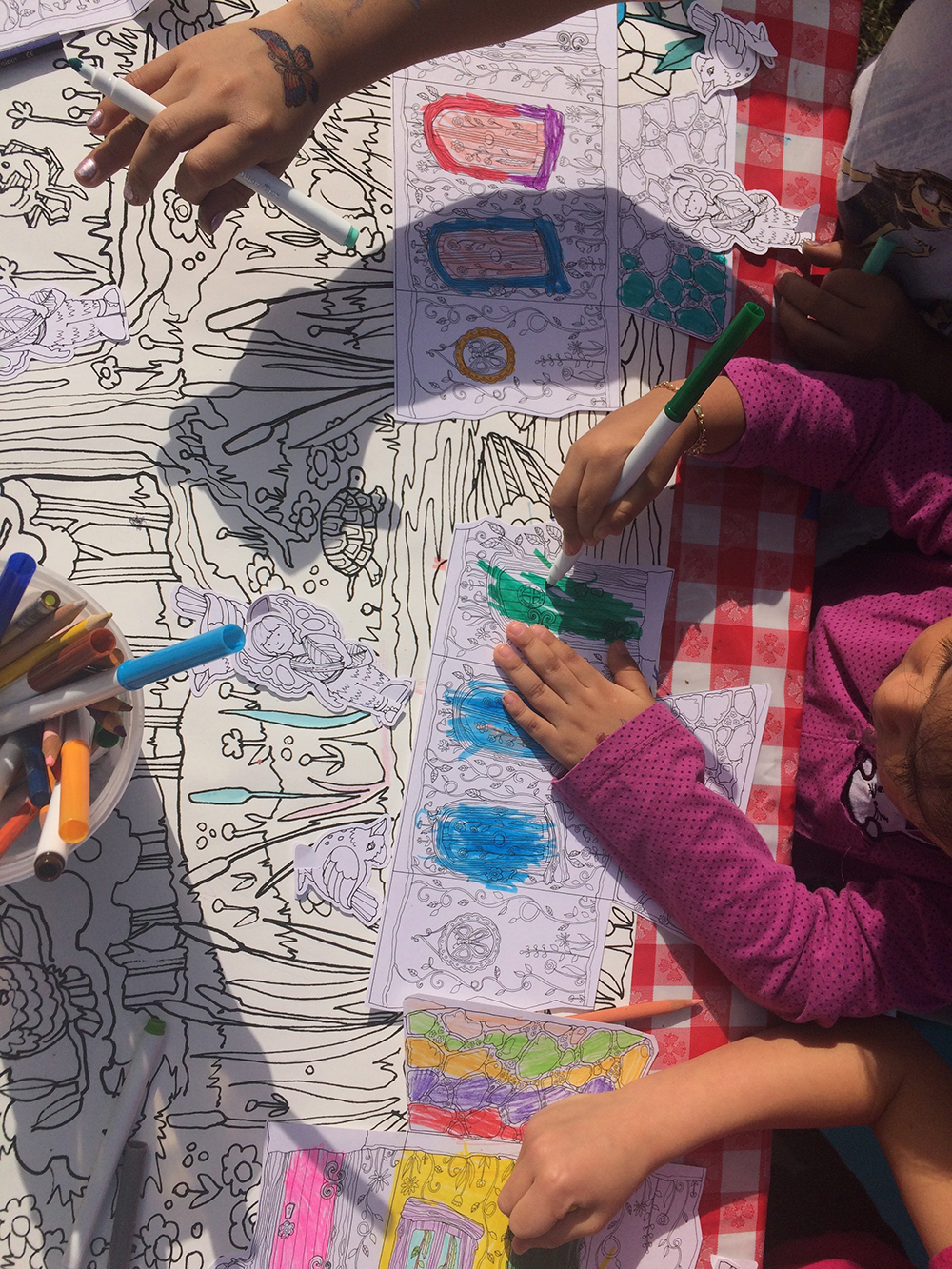
Kids coloring their fairy houses, getting them ready for a fairy and a bird to move in.
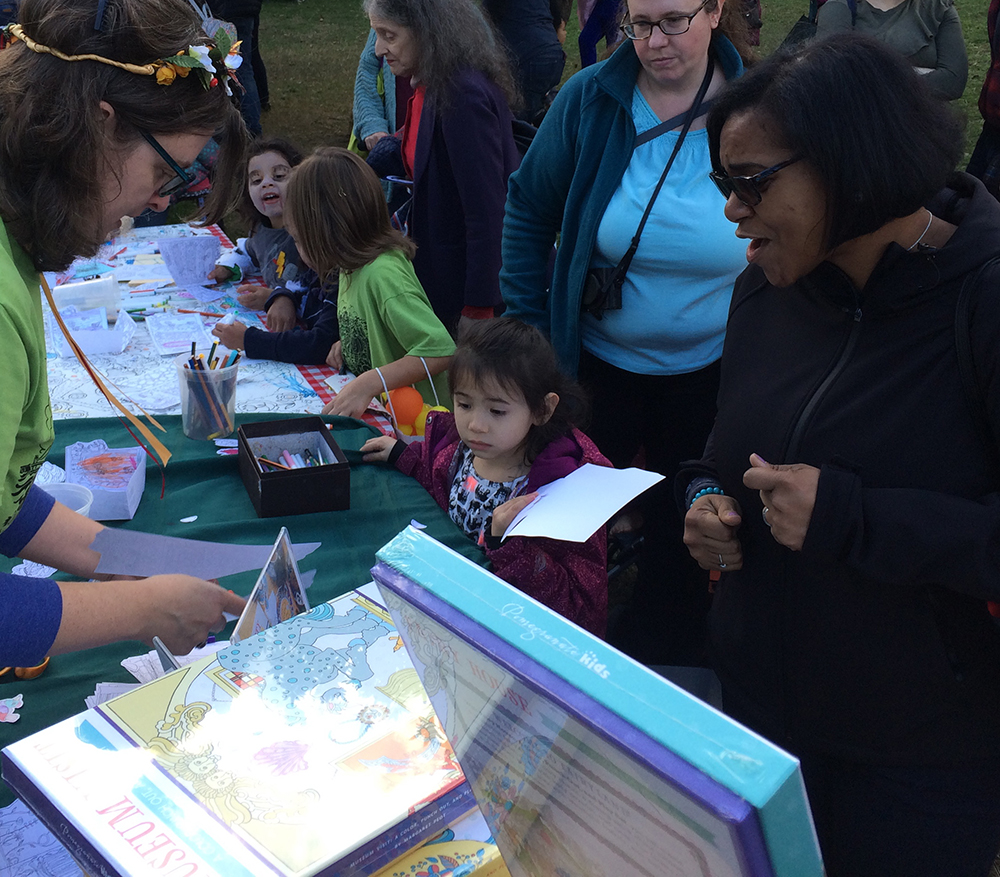
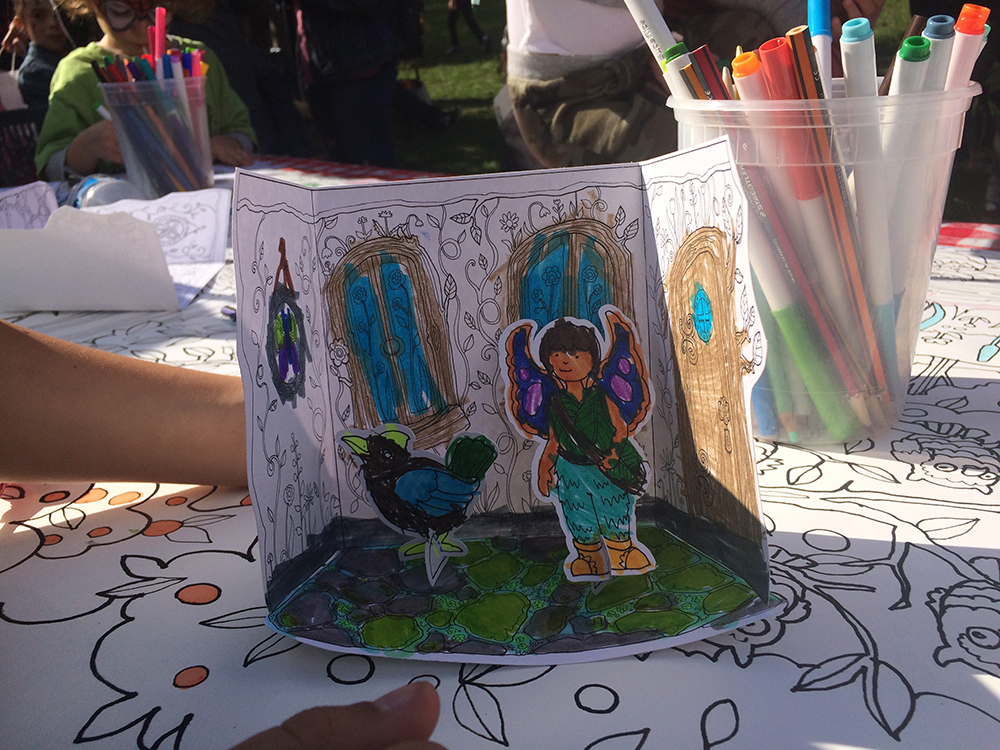
Such a beautiful day for the 17th Annual Harvest Festival yesterday! I had a table of coloring set up to celebrate the publication of my latest project with Pomegranate Kids: FAIRY HOUSE: A Color, Punch Out and Play Set.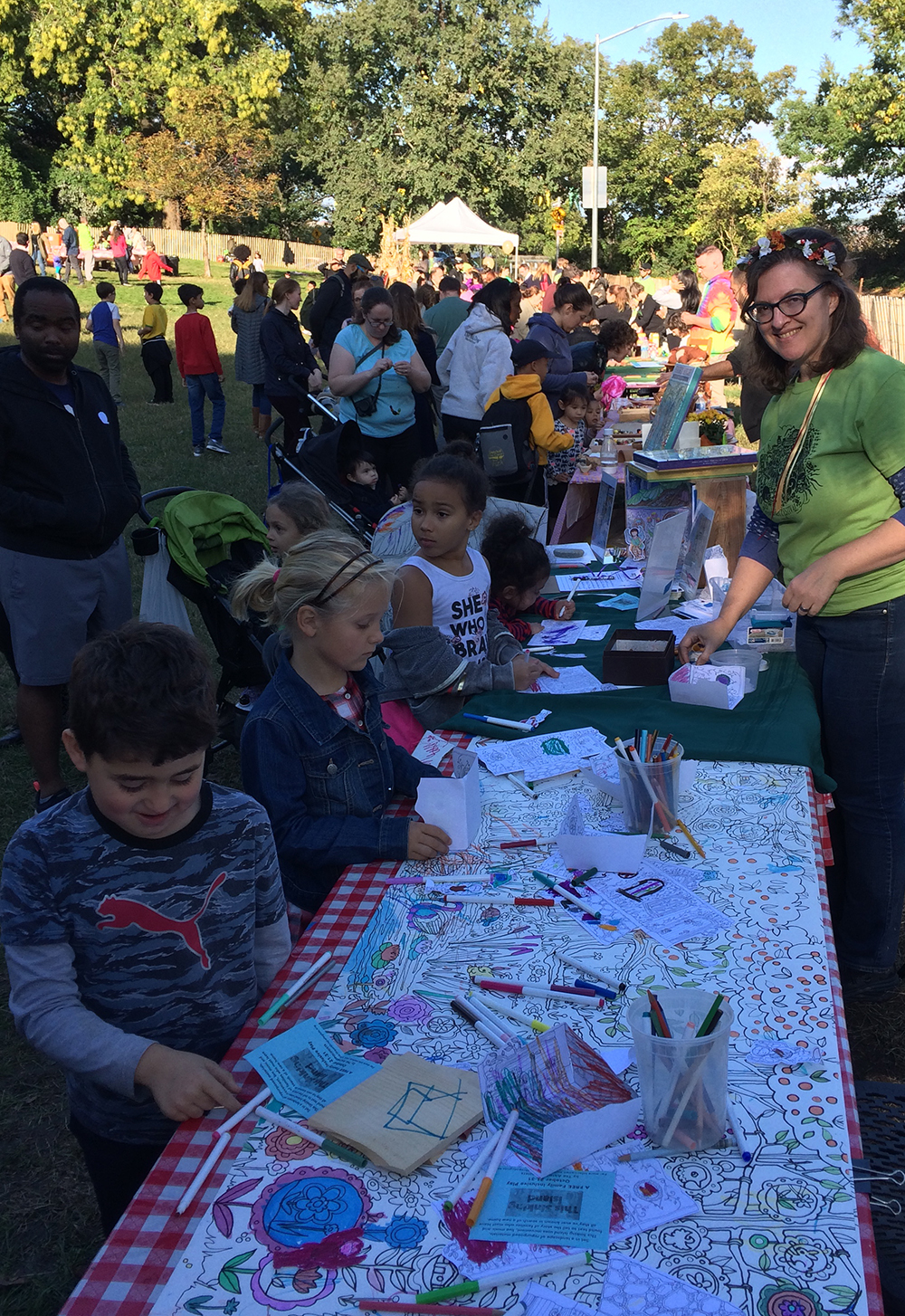
The Harvest Festival was started 17 years ago as a reaction of neighborhood parents to the 9-11 disaster. I started to design a print each year, starting the second year of the event, so I guess there are 16 Harvest-y prints floating around. They make the print image into a t-shirt, and then raffle off the print to pay for table rentals and whatnot. Sometimes I contribute by having a table–I did one one year for Crow Made a Friend where kids made nests from paper lunch bags and put little clay birds into them (with pipe cleaner legs and feather wings).
This year I had a fairy and fairy house coloring event, with the Fairy House Play Set set up for potential inspiration.
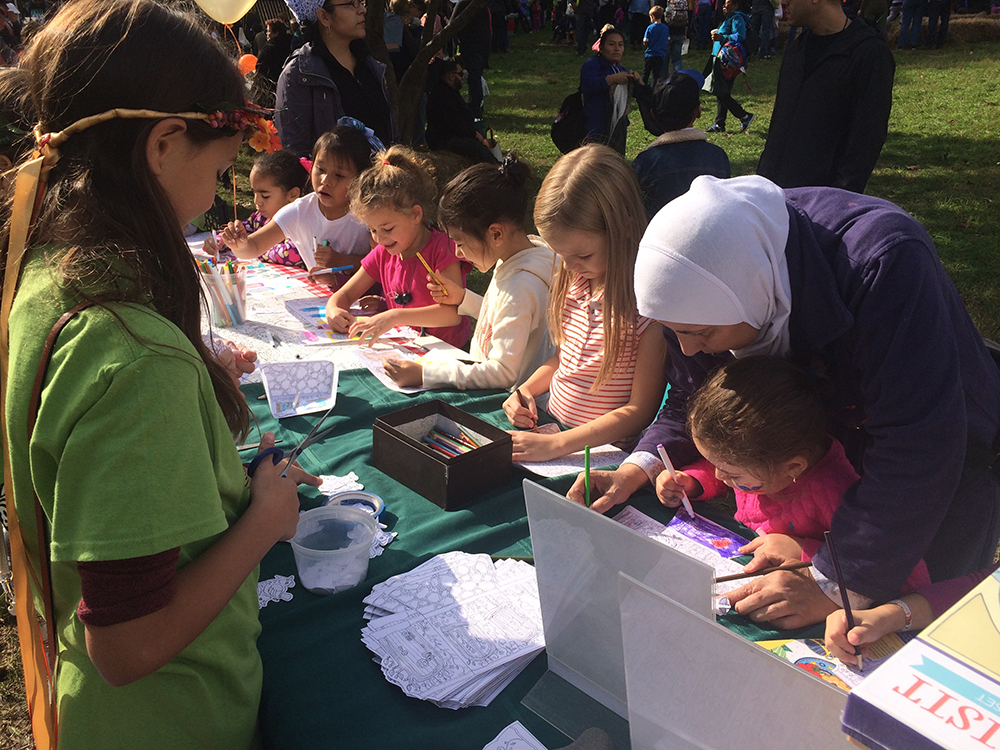
Neighborhood kids lined up to color and play
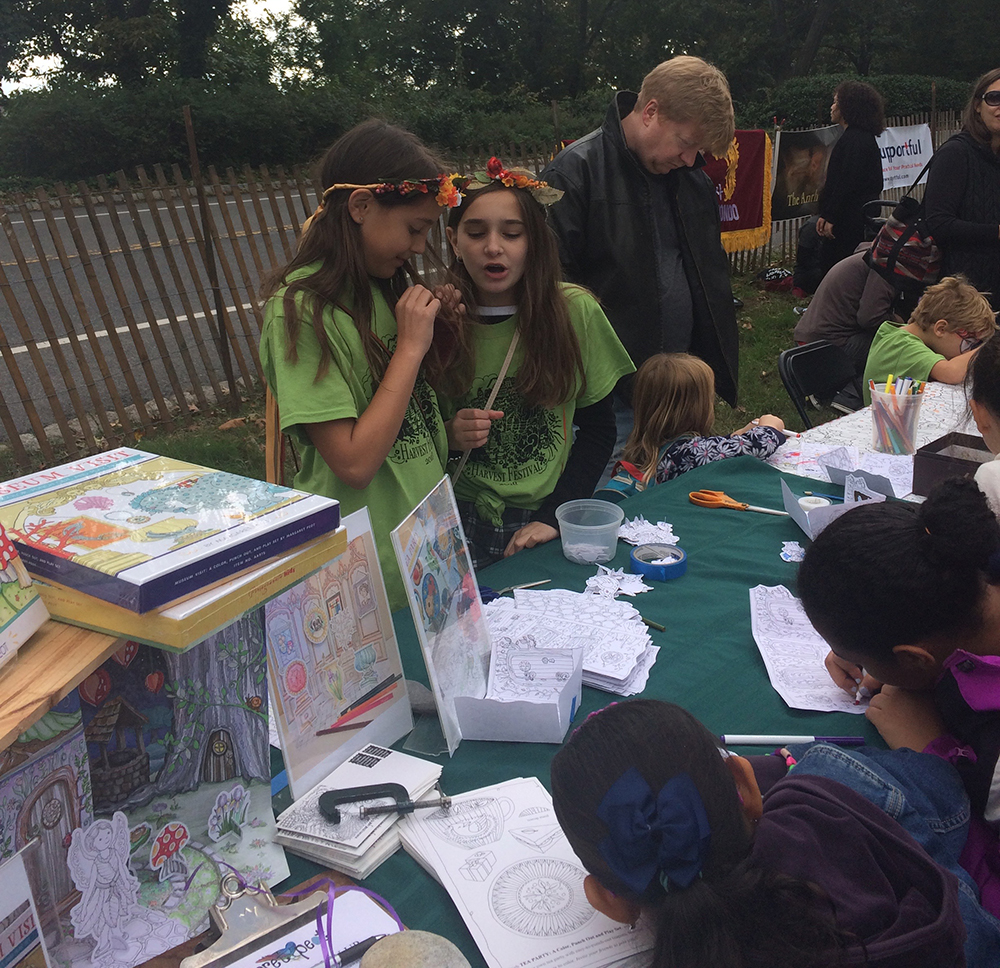
Gracie and Rachel were my helpers: most excellent workers!
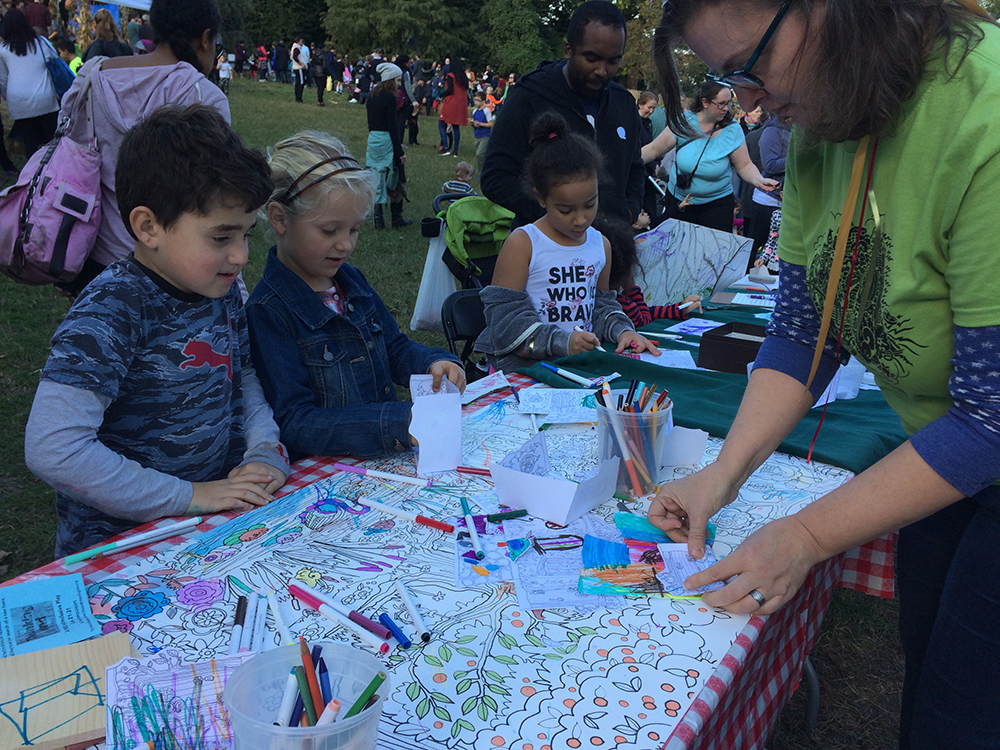
I am folding a fairy house for a child who chose to color the back: a terrific effort–a budding Hans Hoffman.
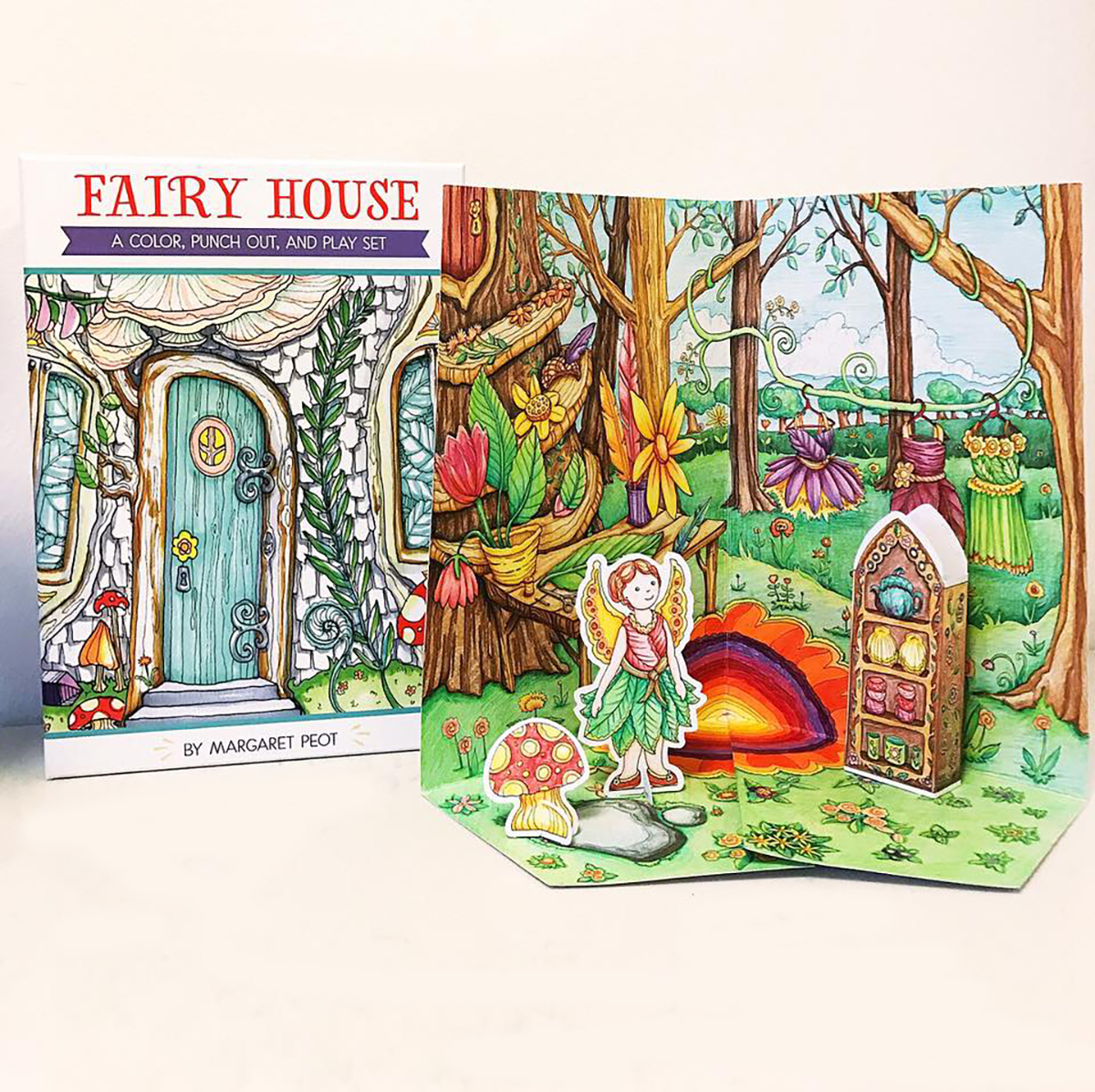
SATURDAY, OCTOBER 20: HARVEST FESTIVAL 2018!
I will have an activity table at the 2018 Harvest Festival in Ft. Tryon Park, on the lawn next to the New Leaf Cafe. Come visit me there, Saturday October 20, from 10-5:00! Its a great place to visit with old neighbors and meet new ones, while your kids enjoy cupcake decorating, face painting, pumpkin painting, games, sack races, art activities, readings and music. Best of all, its all FREE. There are raffles for gift baskets from area stores, and of course the annual print raffle, where the annual print, designed by yours truly, will be offered as a raffle item to pay for table and chair rentals for the event. (Rain date, October 21)
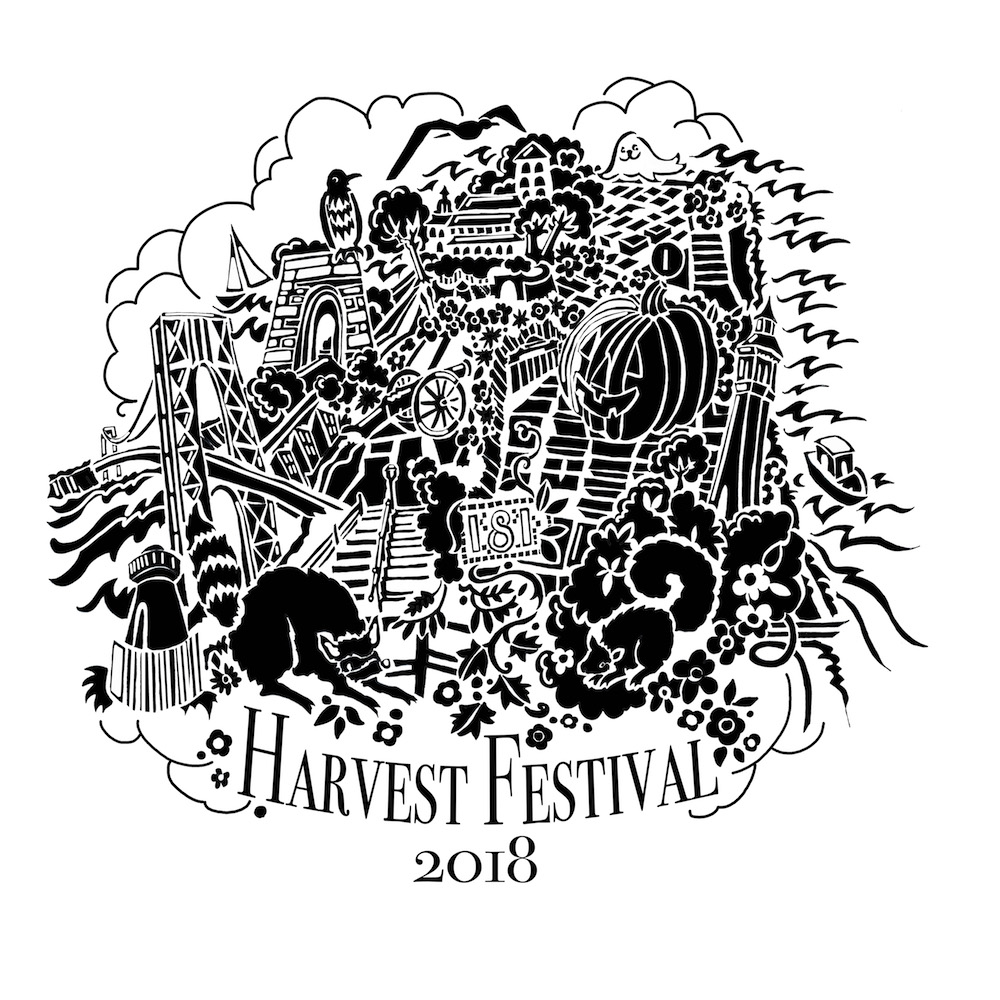
WELCOME TO the FAIRY HOUSE Giveaway!
Enter to win a boxed set of the new FAIRY HOUSE: A Color, Punch Out and Play Set from Pomegranate Kids!

Some scrumptious coloring done by the staff at Pomegranate Kids!
Want to win? Here’s how:
Just Leave a comment below to be entered to win a drawing for a play set! That’s it!
The drawing will be held on October 11, 2018, and one winner will be chosen by a computerized random number generator. All you have to do is leave a comment here to be entered to win:
Not sure what kind of comment to leave? Tell me something about what you like about coloring, fairies, fairy gardens: I want to know! Tell me if you think Arthur Conan Doyle really saw fairies in his garden years ago, or was it all a hoax? Tell me if you think fairies are very tiny, or huge? Or can they change their size because they are magical? Have you ever seen a fairy ring of mushrooms or flowers?
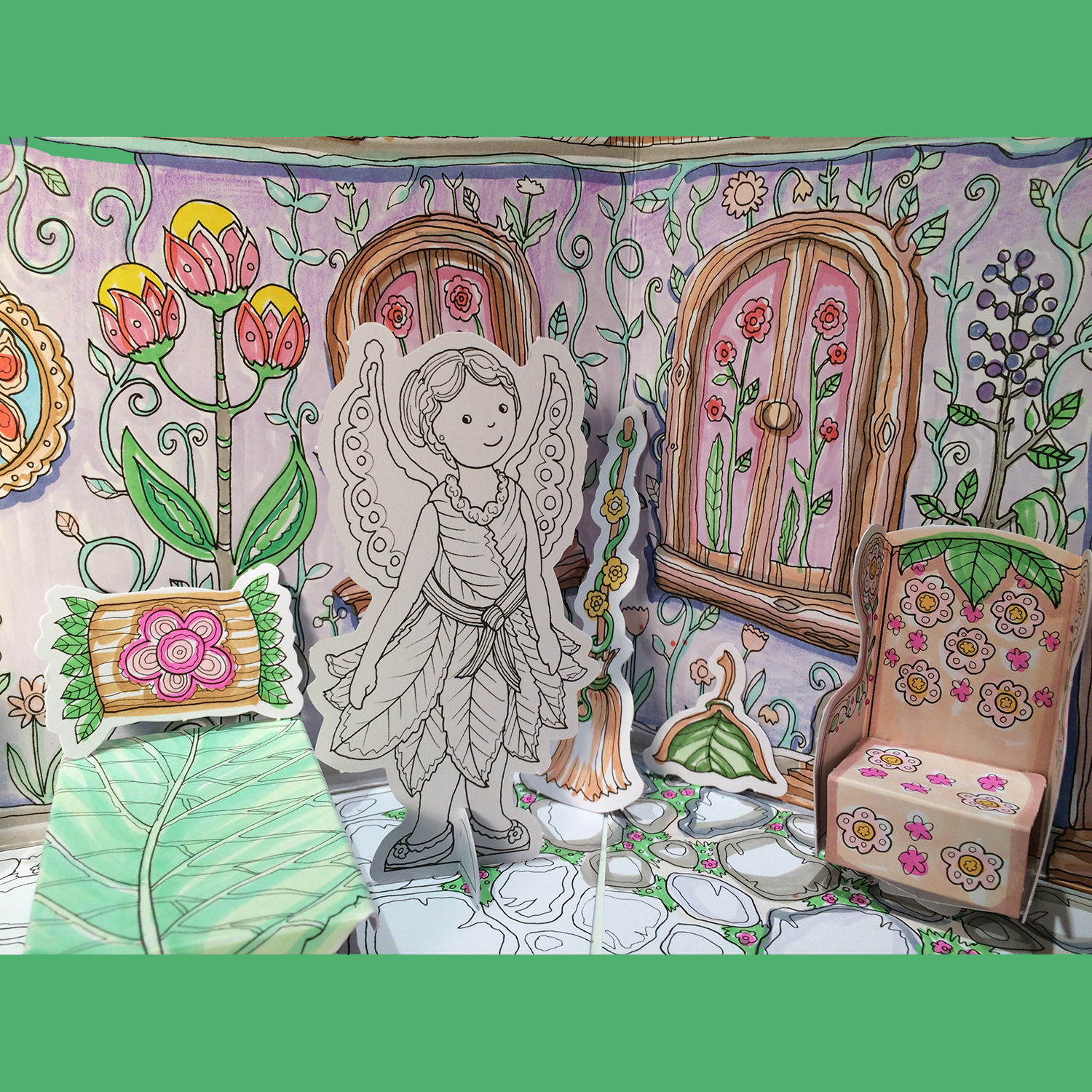
This set contains two fairies! Here’s a fairy in her little house, waiting to be colored.
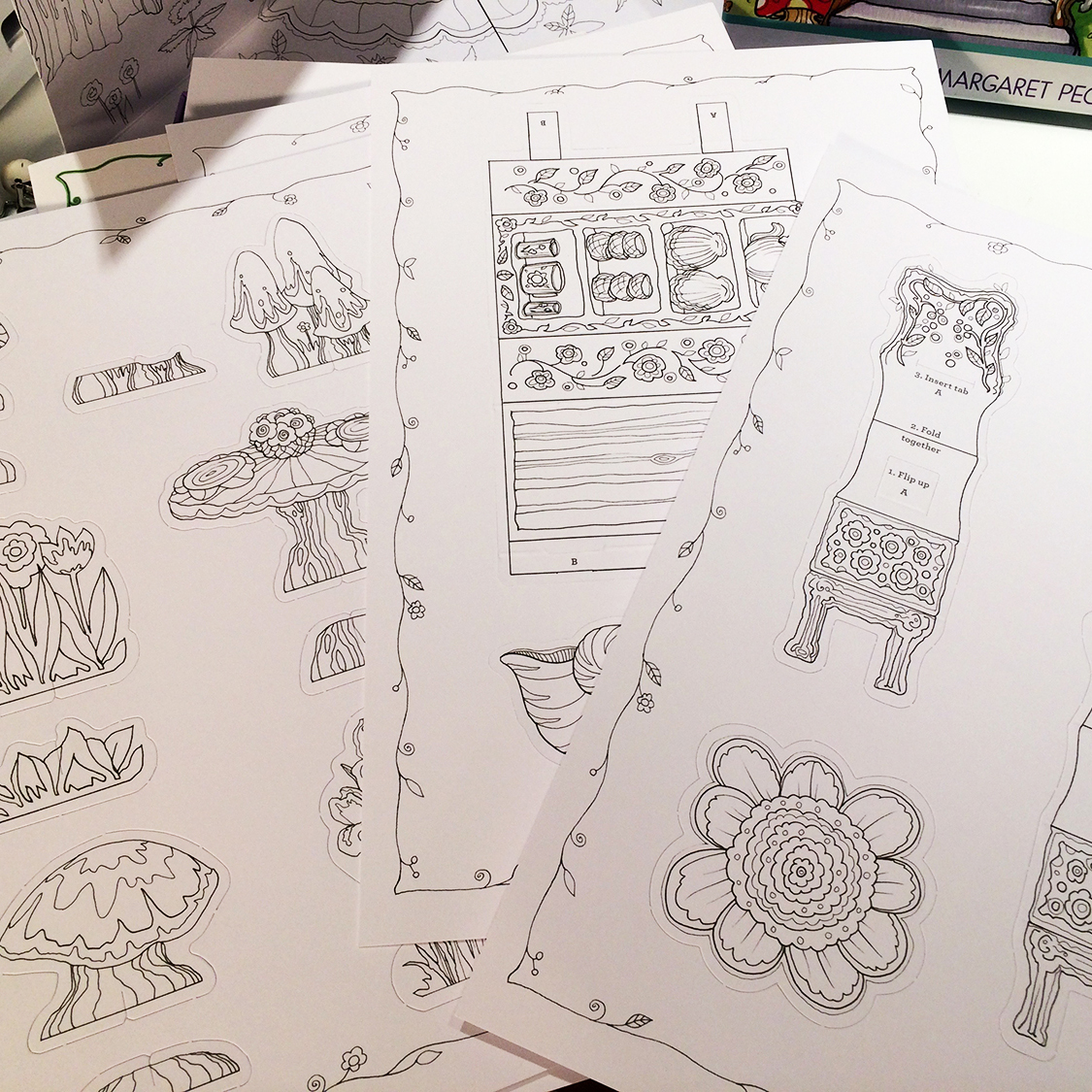
This boxed set also contains 7 card stock pages of colorable fairies and their furry or feathered friends, as well as furniture, household accessories and outdoor plants.
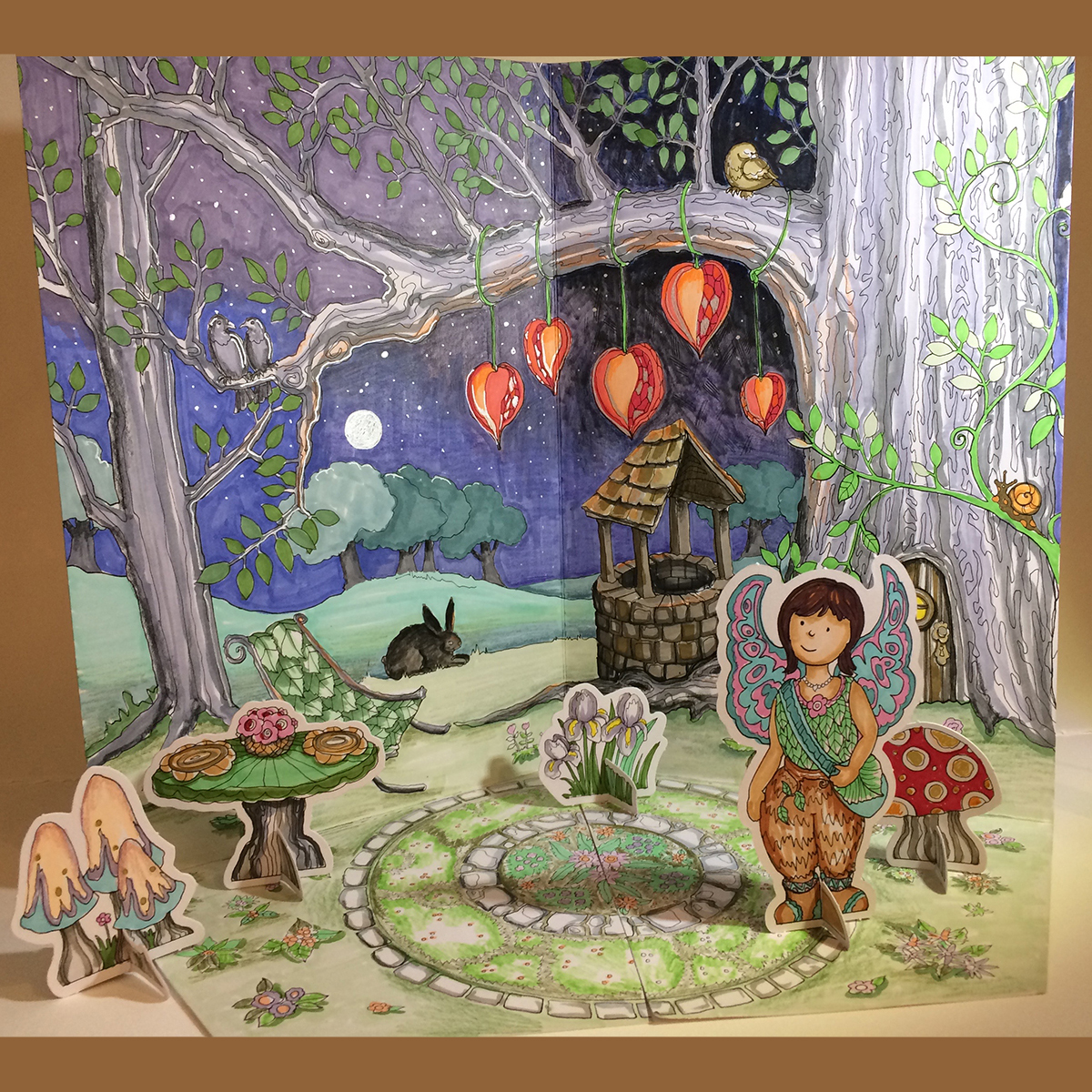
The set also contains a folding play stage set with three 16 x 12 inch fairy house scenes to color
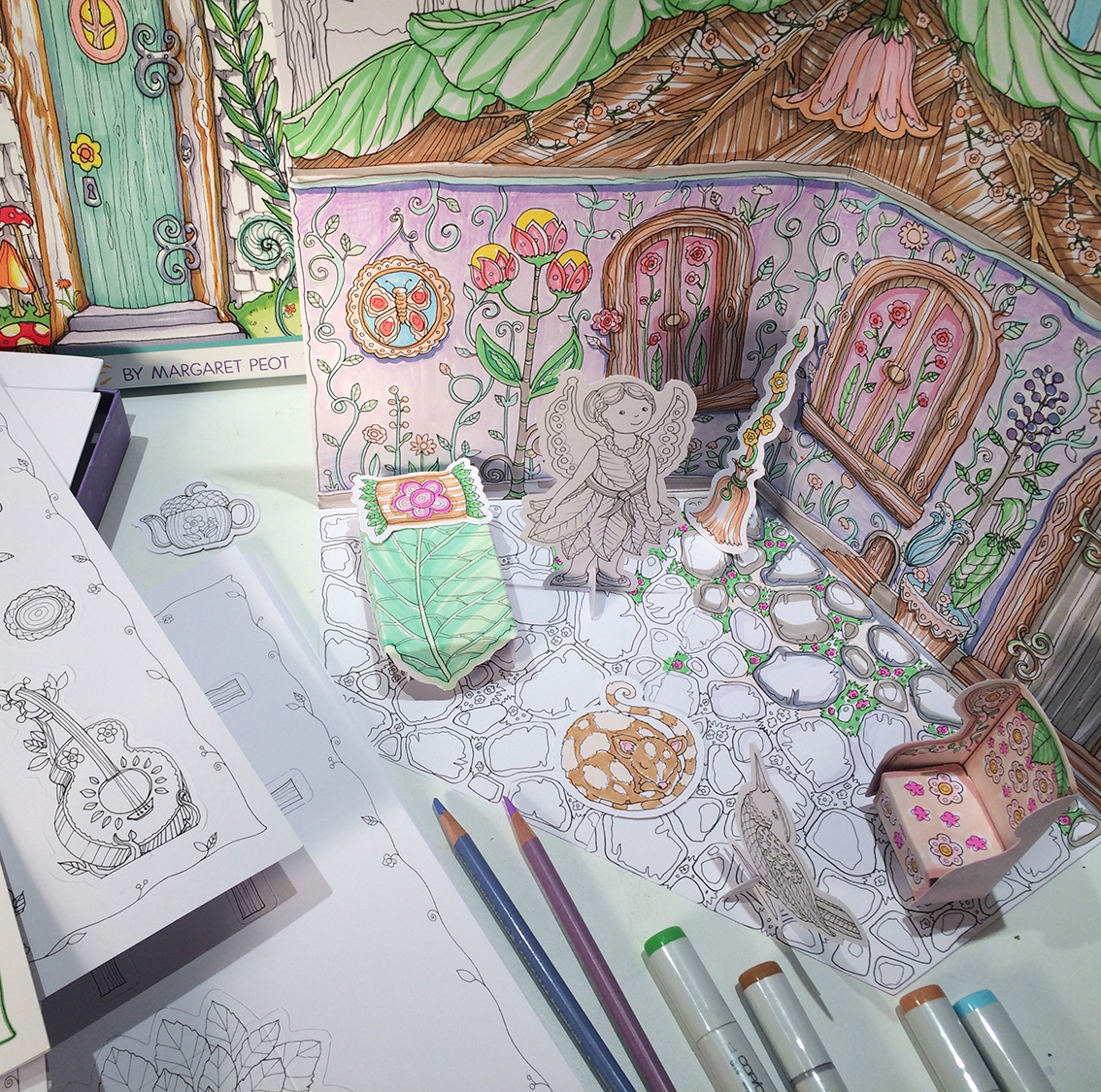
With FAIRY HOUSE: A Color, Punch Out and Play Set, you can create a whimsical fairy abode with cozy chairs, a dining set, a china cabinet, an acorn tea set, a bed with a leafy coverlet and more. The fairies can decorate their own home, play with woodland friends, make music, and dance in the forest.
In addition to all of the above, there is a 4 page information booklet with instructions, a history of fairies, and some tips for detecting the presence of fairies.
If you can’t wait to see if you will win, Fairy House: A Color, Punch Out and Play Set can be purchased from Pomegranate Publishing. You can also purchase the set from The Boston Ballet Shop, from Booktopia in Australia, from Heureka, and also Walmart!
Last week, while walking in the woods, I found this treasure: the shell of an Eastern Box Turtle–without the turtle in it, of course. I think it looks like an inkblot! But also, I am touched by this shell–it has that particular gravity that things like this do–fossils, shells, feathers–a remnant of a life.
It was already quite clean inside, but I wanted to make sure it would be clean enough to be preserved and also be safe in my apartment. According to the wisdom of the internet community (I found specialists on turtles and also preserving turtle shells), I scrubbed out the inside with warm water and dish soap and let it dry in the sun. Then I coated the convex side with Varathane so the scutes stay in place. Scutes, according to Wikipedia are, “The turtle’s shell is covered by scutes formed mostly of keratin. They are built similarly to horn, beak, or nail in other species.” If you find a white, bleached and bony looking turtle shell, it means the scutes have fallen off already.
In my research about preserving the shell, I also learned that Eastern Box Turtles should never be disturbed if you run across them in the wild. Don’t pick them up, and certainly don’t move them. Also, if you find a baby Eastern Box Turtle, leave it alone. As soon as they hatch, they are totally self sufficient, and if you move them away from their home ground, it really disorients them.